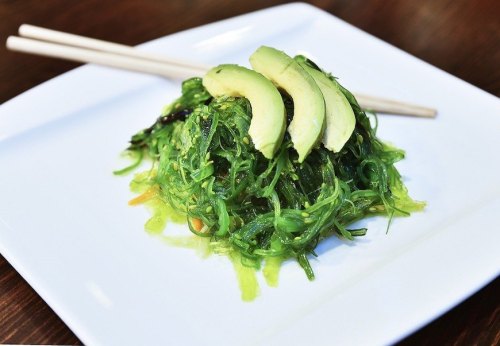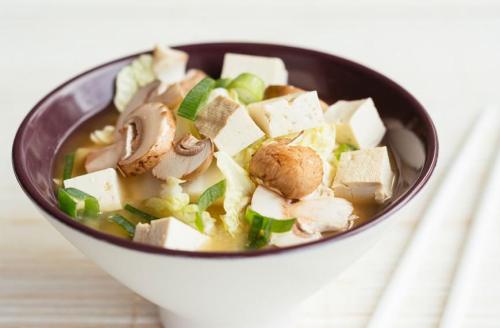Step aside, matcha—wakame is another Japanese staple that deserves some healthy props
Wakame seaweed is a staple in Japanese cooking—here's a rundown of its health benefits and tips for how to prepare and cook with it.

Chances are, if you’ve ever eaten a sushi lunch, then you’ve had wakame—a nutrient-dense seaweed that’s eaten traditionally in Japanese foods like miso soup, stir-fry, and other rice or salad dishes.
Wakame, like all seaweeds, has quite the resume of health-boosting benefits. Just ask W+G Council Member and wellness maven Candice Kumai, who says seaweed is an amazing source of detoxifying chlorophyll and minerals like iron. Kumai also notes that sea vegetables can improve circulation, boost your metabolism, and promote hair and skin health.
What’s more, seaweeds like wakame are actually some of the world’s most sustainable and nutritious crops, making them a double win for your health and the health of the environment.
Keep reading for the 411 on wakame seaweed and how to incorporate it into your diet.

The health benefits of wakame
Wakame is considered one of the healthiest sea vegetables out there, since it’s full of minerals, including manganese, sodium, magnesium, and calcium. It also contains vitamins A, C, E, K, and B vitamins such as folate.
Scientists have historically looked at how eating seaweed might help fight cancer, since the rates of breast cancer are much lower in Japan, where seaweed is consumed on the reg. Studies haven’t been able to pinpoint one specific reason why seaweed seems to have anti-cancer properties, but they think there are several factors related to the hormones and immune system that could be involved.
Because of the overall anti-inflammatory and antioxidant levels in seaweed, researchers believe it can also help decrease the risk of heart disease. Plus, even though it’s low in fat, seaweed like wakame is actually a great source of omega-3 fatty acids, which have been found to help with depression, ADHD, and hormone issues.

How to cook with wakame
Wakame is a type of seaweed that you’ll usually find in dry, prepackaged form, rather than fresh. All you have to do to use it is add water and let it rehydrate for about 10 minutes. Then, you can easily add it to recipes for an easy nutrient boost. Here are a few ideas to get you started.
1. Add wakame to a salad
You can treat wakame like any other veggie and toss into a salad that could use some umami flavor. Just keep some of the hydrated wakame on-hand during the week, and it’ll be ready to add to your favorite lunch. Or, if you prefer a crunchy texture, you can try sprinkling dried wakame on top of your veggies.
Kumai swears wakame also makes a great seaweed salad on its own. This wakame and cucumber salad is inspired by Asian flavors like sesame oil, ginger, and miso paste, which pair well with the main ingredient. Or mix things up with this recipe for hot and sour cucumbers with seaweed and burnt chili.
2. Serve it over rice, grains, pasta or zoodles
Kumai says wakame is traditionally served over rice and udon noodles in Japan, but the green veggie would brighten up any other grain or pasta dish, like this brown rice bowl with shrimp and avocado. If you’re Paleo or gluten-free and want to do a grainless version, swap in cauli rice or veggie spirals for a low-carb take on classic Asian noodle bowls.
3. Incorporate it into soups and stews
Wakame is a great addition to miso soup, but the options go far beyond that. If you’re a bit hesitant to try wakame, warm up to its unique flavor with this vegetarian carrot, wakame, and kale stew. You’ll hardly even notice the wakame in this recipe, since all the other flavors take over. (Its wellness benefits, however, will be 100 percent intact.)
Speaking of superfoods, there’s one that Meghan Markle isn’t allowed to eat on the road. And here’s the verdict on whether acai bowls are *really* healthy.
Sign Up for Our Daily Newsletter
Get all the latest in wellness, trends, food, fitness, beauty, and more delivered right to your inbox.
Got it, you've been added to our email list.










